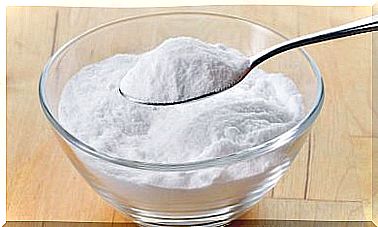The Role Of Lactic Acid In Exercise
Lactic acid, or its ionized form lactate, is a chemical compound that plays important roles in different biochemical processes, such as lactic fermentation.
One of the body tissues that produces the most lactic acid is muscle, since it appears after the consumption of carbohydrates for energy. A process known as lactic fermentation. We will tell you all about this molecule in the following article.
Lactic acid production

Lactic acid is produced mainly in muscle cells and red blood cells. It is formed when the body breaks down carbohydrates to form energy when oxygen levels are low. These decrease during strenuous exercise or when the person has an infection or illness.
The primary source of lactate is the breakdown of a carbohydrate called glycogen. This substance is a natural reserve of the body, made up of multiple chains of sugar (glucose). Its breakdown produces a lot of energy, making it one of the main sources of muscle.
However, using glucose requires oxygen, and is a somewhat longer process. Therefore, in situations of high intensity, cells shorten the path and produce energy through fermentation. It is less effective but faster.
While some cells have the ability to use pyruvate for energy, others cannot. That is why muscle is one of the tissues where more lactate is produced.
Lactic acid and muscles
Lactic acid is actually a fuel, not a waste product. Muscles deliberately produce it from glucose and burn it for energy.
The reason athletes can work so hard and for so long is that training makes the muscles absorb lactic acid more effectively.
Muscle cells are capable of converting glucose into lactic acid. Later, this is absorbed and used by cellular organelles called mitochondria, which are responsible for the production of energy in cells.
Mitochondria have a characteristic protein to transport lactic acid inside. Therefore, intense training causes the mass of the mitochondria to double and they burn more lactic acid. As a result, the muscles work better.
Lactic acid during exercise

With training, many cells can adapt to use more pyruvate and therefore produce less lactate. Also, when physical exercise is increased, additional amounts of muscle fibers are recruited.
These fibers are rarely used when the person is resting or doing light activities. Many of them are fast activating and do not have much capacity to convert pyruvate into energy. Therefore, a lot of pyruvate is converted to lactate.
Lactate: a very dynamic substance
When lactate is produced, it tries to leave the muscles and enter nearby muscles, such as the bloodstream or the space between muscle cells, where the lactate concentration is lower.
When lactic acid gets into another muscle, it may be converted back to pyruvate so that it can be used for aerobic energy.
Lactate is also used by the heart for fuel. In turn, it can go to the liver to be converted back to glucose and glycogen and thus start the cycle again.
Finally, it can also travel quickly from one part of the body to another. There is even evidence that some amounts of lactate are converted back to glycogen within the muscles, without necessarily going to the liver.








